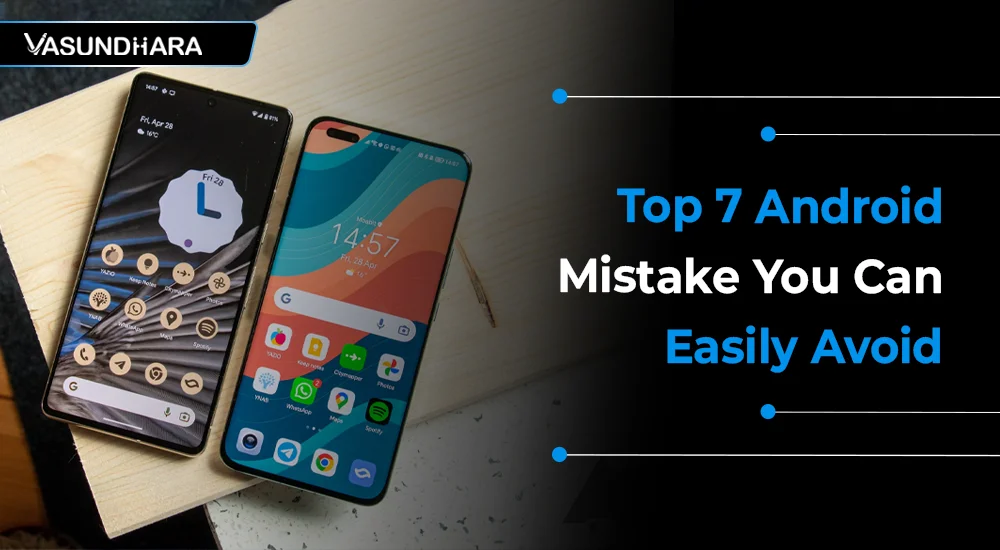Top 7 Android Mistake You Can Easily Avoid


- Jul 12, 2022
Steps
Android is the most popular and trending platform among mobile app developers. There are several reasons for this tendency such as it's free, open-source, and easily customizable. It offers lots of more benefits besides these.
It's very easy to learn if you have cleared the basic concepts of Java. But while developing an app, most programmers make common mistakes that take your time and effort.
If you have decided to make an Android app, then just stick to it only. Do not ever rush to make the same app for iOS devices. You will face so many difficulties if you try to do it. You have to follow the iOS design standards and strictly follow the guidelines which are completely different from the Android platform. So, if you break the rules, your application may get rejected.
Intents are the most important part of the app development process as they are used to start various activities in Android. It also passes the information between different components of the app. So make sure you use the intents while developing an Android app. Always utilize Intents for such scenarios unless there is a solid reason to develop a specialized implementation (for example, a camera that applies filters). It will save you a lot of programming time and remove any superfluous permissions from the AndroidManifest.xml.
As they may be modified through parent activity, fragments are useful for customizing your content to match various screen parameters. Because they are reusable, integrate well with other operations, and are quickly moved, the flexibility they give is a huge benefit. They are essentially separate building blocks that work within an activity and have their own life cycles. For these reasons, fragments should be used regularly to build Android apps.
The main thread ensures that the user interface remains responsive. We all know how important it is to have a responsive user interface. There's no need to go into more detail. Keep in mind that a less responsive interface is generally caused by a frame rate of fewer than 24 frames per second and a delay of more than 100 milliseconds. This delivers a slow user experience, resulting in a delay that generally leads to the abnormal termination of the app. So, don't block the main thread to avoid such issues.
Do not ever make this mistake, in case you decide to write your own code and use it rather than utilizing some ready-made code for developing specific functionalities. You can save your time and effort by using already written code. It's fine and meaningful if you want to practice it. However, you should stay away from such errors while working on live projects. Some useful programs are already written, tested, and widely used in the Android developer's community such as Gradle to build systems, Picasso for image loading, GSON for JSON parsing, Retrofit for network calls, etc.
Images may consume a significant amount of memory. However, there are methods to display high-quality photographs without wasting this valuable resource. While loading several bitmaps into memory, learn how to intelligently handle memory and disc caching. This will assure that the user interface's responsiveness and flow are not affected.
In Android, layouts have an XML presentation. To draw content, the XML must be parsed, the screen must be measured, and all items must be positioned appropriately. It's a time-consuming procedure that has to be optimized.
To conclude, you must have to remember these points and ensure not to make these mistakes. Android is growing rapidly with ultimate features to ease your work. Get the perfect.
In this blog, you have learned about the common Android mistakes that you should know about.
Mistakes are the first step toward learning something new. Try to find the solution to all those mistakes before you start developing your application.
Copyright © 2025 Vasundhara Infotech. All Rights Reserved.
